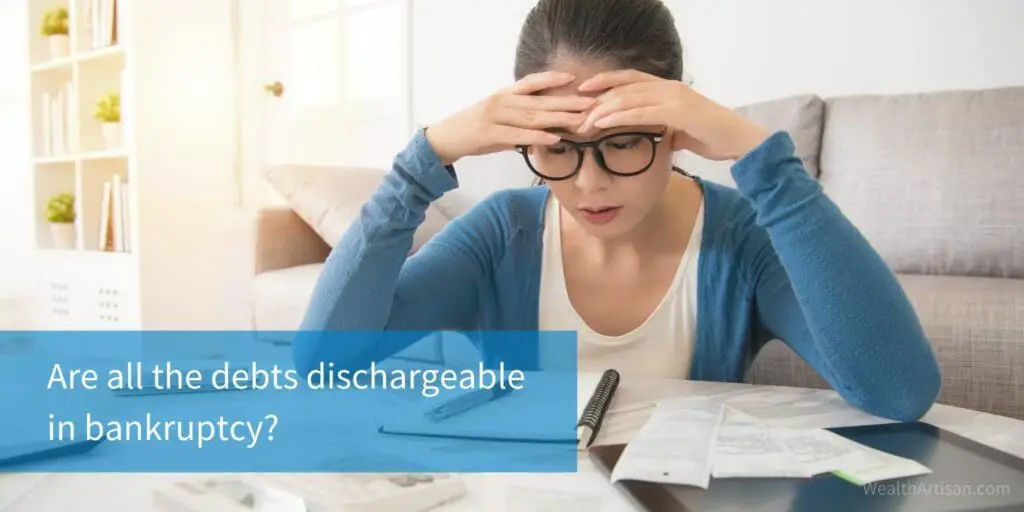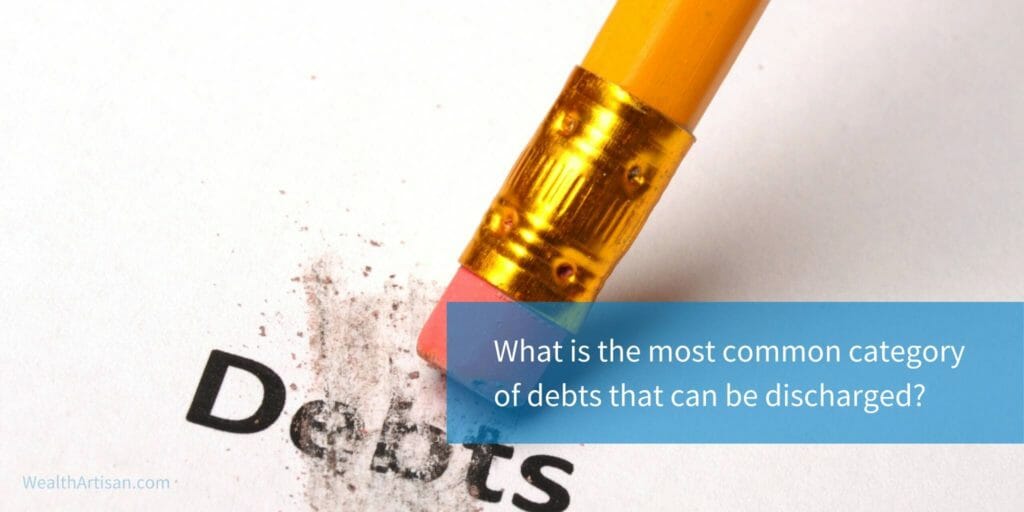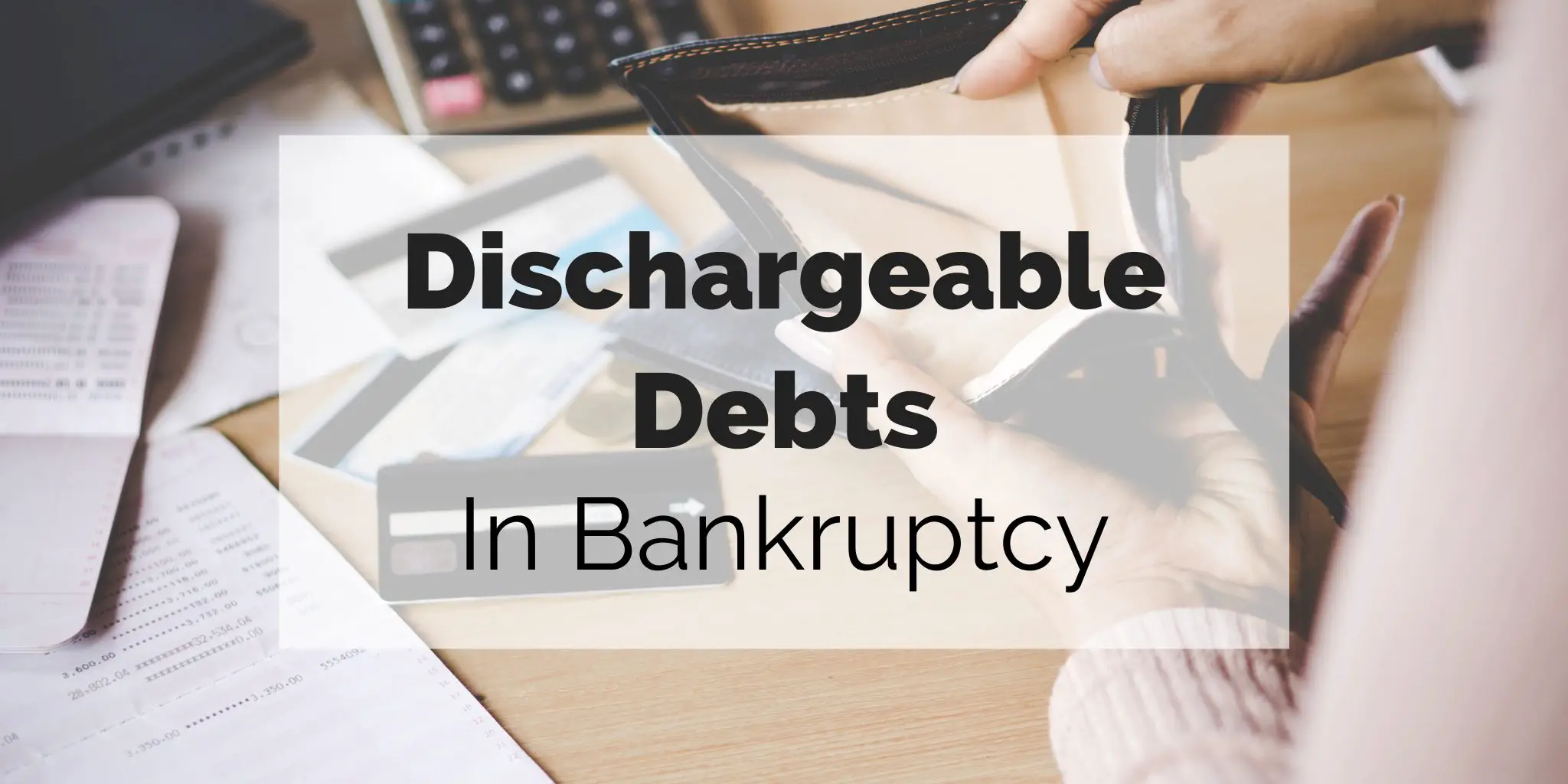People often misunderstand that filing for bankruptcy discharges or absolves them from paying all debts. This is not true. There are two types of debts: dischargeable debts and debts that cannot be discharged.
This narrative-driven blog will help you explore and understand more about dischargeable debts.
What is bankruptcy?
In simple words, bankruptcy is when a person or a company can no longer pay their debts while creditors are pressuring them to pay dues. The individual or company makes a public announcement that they don’t have money to pay, and that they are relieved from creditor harassment.
The court sends a communication to the applicant’s creditors to not pursue the matter any further related to the recovery of the amount from the debtor.
Are all the debts dischargeable in bankruptcy?

Dischargeable debts are certain debts the court allows the bankrupt person not to pay after filing for bankruptcy. On the other hand, non-dischargeable debts are those he is required to pay even after the judgment.
Which debts are not discharged in bankruptcy?
Debts discharged in bankruptcy vary from case to case and chapter to chapter of the bankruptcy code. According to chapter 11 of the bankruptcy code, where a business hopes to become profitable after a reorganization plan, the approved debts to be paid by the debtor in the reorganization plan become non-dischargeable debts. Meanwhile, unapproved debts become dischargeable debts.
According to chapter 13 bankruptcy, an individual debtor or a small business owner, like a proprietorship business, needs to repay all debts in monthly installments within a period of three to five years. However, some debts like court fees and homeowner’s association fees can be discharged.
Chapter 7 of the bankruptcy code states common dischargeable debts. These are debts from credit cards, unpaid taxes, bad checks, utility bills, court judgments, lease, and others. Debts that cannot be discharged are debts to government agencies, recent taxes, federal tax liens, and debts that debtors successfully challenge.
What is the most common category of debts that can be discharged?

Some of the most common categories of debts that are dischargeable are:
- Medical bills
- Personal loans from friends, family and employers,
- Utility bills (past due amounts)
- Dishonored checks ( if not based on fraud)
- Student loans
- Business debts
- Civil court judgments
- Social security payments
- Money owed in lease agreements
- Attorney fees
- Collection agency amounts
The above debts are dischargeable unless the bankrupt person has committed a fraud. However, all the chargeable debts need to meet the timing in order to be successfully discharged.
Pre-filing debt
Pre-filing debts are all the debts you have incurred before filing for bankruptcy. Among the chargeable category, the court will discharge only those dischargeable debts that you have incurred before filing the bankruptcy.
Post- filing debts
Post-filing debts are the bills a person collects after filing bankruptcy paperwork. These are non-dischargeable debts, needed to be paid after the court order. For example, if you continue to use your electric service after you had filed for bankruptcy, your electricity bills pre-bankruptcy application will be discharged. The bills you accumulate after filing, however, will not be discharged.
Working for bankruptcy discharge
A debtor receives bankruptcy discharge to relieve him from making outstanding payments to creditors when he’s incapable of paying. Working for bankruptcy discharge requires meeting the debtor’s specific requirements and the timing at which the bankruptcy is filed.
Usually, the court grants discharge as soon as possible, depending on the type of bankruptcy filed. For example, chapter 7 bankruptcies generally receive a discharge within four months from the date of filing. The debtor receives a chapter 13 bankruptcy discharge after he clears all payments due under the reorganization plan, which is three to five years.
Certain debts are exempt from discharge in a bankruptcy filing. In contrast, most of the debts are covered, as long as there is no fraud or litigation objecting to the discharge.
After all the requirements are complete, the court sends a copy of the communication to all creditors. This informs them of the discharge and that they shouldn’t attempt any payment collection from the debtor by any means. The order also cautions the creditors that violations against the order may result in punishments.
